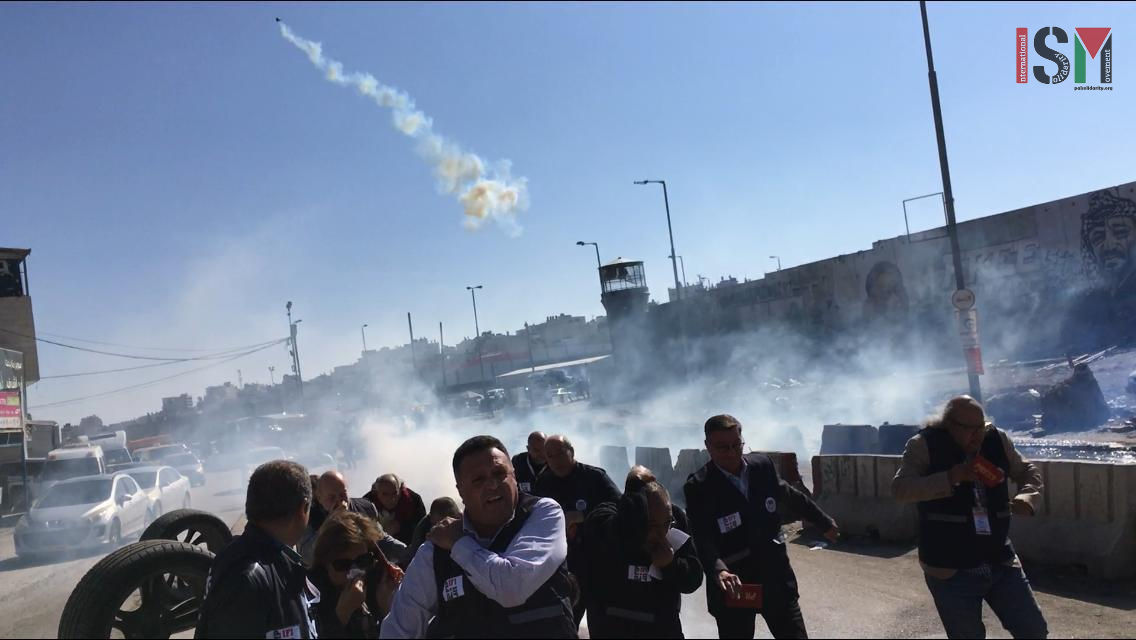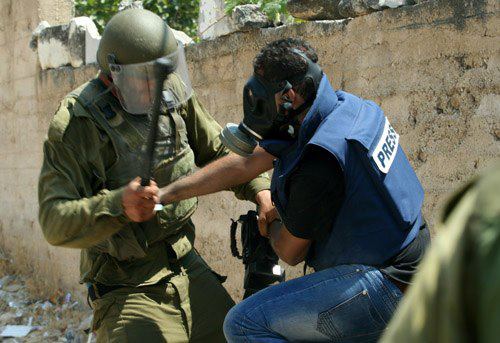Tag: Press freedom
-
International and Palestinian Journalists Tear Gassed
November 17, 2018 | International Solidarity Movement, Ramallah team | Ramallah, occupied Palestine The International Federation of Journalists (IFJ) decided to hold its annual meeting in Palestine this year, where they demonstrated at the infamous Qalandia checkpoint on Saturday. The dozens of journalists, holding only international press cards, were immediately met with canisters of tear…
-
Foreign Press Association demands investigation of incident in which soldiers beat journalists
By Emily Greenzweig 20 August 2012 | Haaretz The Foreign Press Association (FPA) is demanding an investigation of the incident in which soldiers beat journalists. The FPA contacted the Prime Minister’s Office and the Israeli army following the incident in which journalists were beaten with sticks. Minister of Public Diplomacy: Expresses doubt concerning journalists who…
-
Two children shot in the village of Bil’in
28 April 2011 | Popular Committee Against the Wall and Settlements Today around noon Jamal Atef Al Khateeb (age 15) was shot with rubber bullets in his stomach and mouth, and Nashmi Mohamad Abu Rahma (age 16) was shot with a rubber bullet in his leg. They were transferred to a Ramallah hospital for treatment.…


